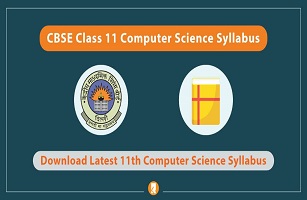 UrbanTution
UrbanTution
Overview
Course Description
Computer Science Tutor for class 11
The syllabus for computer science for class 11 will be covered by the tutor. Urbantution stands behind every tuition. Urbantution will provide you certified computer science, tutor, for class 11.
If you are looking for computer science tuition online for class 11, we are here to help you. This course is designed for students of class 11. Students will get live one-to-one class for class 11 computer science after booking a tutor.
Book tutor for computer science with python for class 12.
Unit 1: Computer Systems and Organisation (CSO)
Basic computer organization: description of a computer system and mobile system, CPU, memory, hard disk, I/O, battery, power.
Types of software: application, OS, utility, libraries.
Language of Bits: bit, byte, MB, GB, TB, and PB.
Boolean logic: OR, AND, NAND, NOR, XOR, NOT, truth tables, De Morgan''s laws
Information representation: numbers in base 2, 8, 16, unsigned integers, binary addition
Strings: ASCII, UTF8, UTF32, ISCII (Indian script code)
Execution of a program: basic flow of compilation – program binary execution
Interpreters (process one line at a time), difference between a compiler and an interpreter
Running a program: Notion of an operating system, how an operating system runs a program, idea of loading, operating system as a resource manager.
Concept of cloud computers, cloud storage (public/private), and brief introduction to parallel computing.
Unit 2: Computational Thinking and Programming
Introduction to Problem solving: Problem solving cycle - Analysing a problem, designing algorithms and representation of algorithm using flowchart and pseudo-code.
Decomposition - concept, need for decomposing a problem, examples of problem solving using decomposition.
Familiarization with the basics of Python programming: a simple “hello world" program, the process of writing a program (Interactive & Script mode), running it and print statements; simple data-types: integer, float and string.
● Features of Python, Python Character Set, Token & Identifiers, Keywords, Literals, Delimiters, Operators.
● Comments: (Single line & Multiline/ Continuation statements), Clarity & Simplification of expression
● Introduce the notion of a variable and methods to manipulate it (concept of L-value and R-value even if not taught explicitly).
● Knowledge of data types and operators: accepting input from the console, assignment statement, expressions, operators and their precedence.
● Operators & types: Binary operators-Arithmetic, Relational Operators, Logical Operators, Augmented Assignment Operators.
● Execution of a program, errors- syntax error, run-time error and logical error.
● Conditional statements: if, if-else, if-elif-else; simple programs: e.g.: absolute value, sort 3 numbers and divisibility of a number.
● Notion of iterative computation and control flow: for(range(),len()), while, using flowcharts, suggested programs: calculation of simple and compound interests, finding the factorial of a positive number etc.
● Strings: Traversal, operations – concatenation, repetition, membership; functions/methods –len(), capitalize(), title(), upper(), lower(), count(), find(), index(), isalnum(), islower(), isupper(), isspace(), isalpha(), isdigit(), split(), partition(), strip(), lstrip(), rstrip(), replace(); String slicing.
● Lists: Definition, Creation of a list, Traversal of a list. Operations on a list - concatenation, repetition, membership; functions/methods – len(), list(), 3 append(), extend(), insert(), count(), index(), remove(), pop(), reverse(), sort(), min(), max(), sum(); Lists Slicing; Nested lists; finding the maximum, minimum, mean of numeric values stored in a list; linear search on list of numbers and counting the frequency of elements in a list.
● Tuples: Definition, Creation of a Tuple, Traversal of a tuple. Operations on a tuple - concatenation, repetition, membership; functions/methods – len(), tuple(), count(), index(), sorted(), min(), max(), sum(); Nested tuple; Tuple slicing; finding the minimum, maximum, mean of values stored in a tuple; linear search on a tuple of numbers, counting the frequency of elements in a tuple.
● Dictionary: Definition, Creation, Accessing elements of a dictionary, add an item, modify an item in a dictionary; Traversal, functions/methods – len(), dict(), keys(), values(), items(), get(), update(), del(), del, clear(), fromkeys(), copy(), pop(), popitem(), setdefault(), max(), min(), count(), sorted() copy(); Suggested programs : count the number of times a character appears in a given string using a dictionary, create a dictionary with names of employees, their salary and access them.
● Sorting algorithm: bubble and insertion sort; count the number of operations while sorting.
● Introduction to Python modules: Importing math module (pi, e, sqrt, ceil, floor, pow, fabs, sin, cos, tan); random module (random, randint, randrange), statistics module (mean, median, mode).
Unit 3: Society, Law and Ethics (SLE-1) - Cyber safety
Cyber safety: safely browsing the web, identity protection, confidentiality, social networks,cyber trolls and bullying
Appropriate usage of social networks: spread of rumours, and common social networking sites (Twitter, LinkedIn, and Facebook) and specific usage rules.
Safely accessing web sites: adware, malware, viruses, Trojans
Safely communicating data: secure connections, eavesdropping, phishing and identity Verification.
Intellectual property rights, plagiarism, digital rights management, and licensing (Creative Commons, GPL and Apache), open source, open data, privacy.
Privacy laws, fraud; cyber-crime- phishing, illegal downloads, child pornography, scams; cyber forensics, IT Act, 2000.
Technology and society:
● understanding of societal issues and cultural changes induced by technology.
● E-waste management: proper disposal of used electronic gadgets.
● Identity theft, unique ids and biometrics.
● Gender and disability issues while teaching and using computers.
5. Practical
Programming in Python:
● Input a welcome message and display it.
● Input two numbers and display the larger / smaller number.
● Input three numbers and display the largest / smallest number.
● Given two integers x and n, compute 𝑥.
● Write a program to input the value of x and n and print the sum of the following series: 1+x+x2+x3+x4+.............xn
1-x+x2-x3+x4-.............xn
x + x2/2 - x3/3 + x4/4 - .............xn/n
x + x2/2! - x3/3! + x4/4! - .............xn/n5!
● Determine whether a number is a perfect number, an armstrong number or a palindrome.
● Input a number and check if the number is a prime or composite number.
● Display the terms of a Fibonacci series.
● Compute the greatest common divisor and least common multiple of two integers.
● Count and display the number of vowels, consonants, uppercase, lowercase characters in string.
● Input a string and determine whether it is a palindrome or not; convert the case of characters in a string.
● Find the largest/smallest number in a list/tuple
● Input a list of numbers and swap elements at the even location with the elements at the odd location.
● Input a list of elements, sort in ascending/descending order using Bubble/Insertion sort.
● Input a list/tuple of elements, search for a given element in the list/tuple.
● Input a list of numbers and test if a number is equal to the sum of the cubes of its digits. Find the smallest and largest such number from the given list of numbers.
● Create a dictionary with the roll number, name and marks of n students in a class and display the names of students who have marks above 75.




